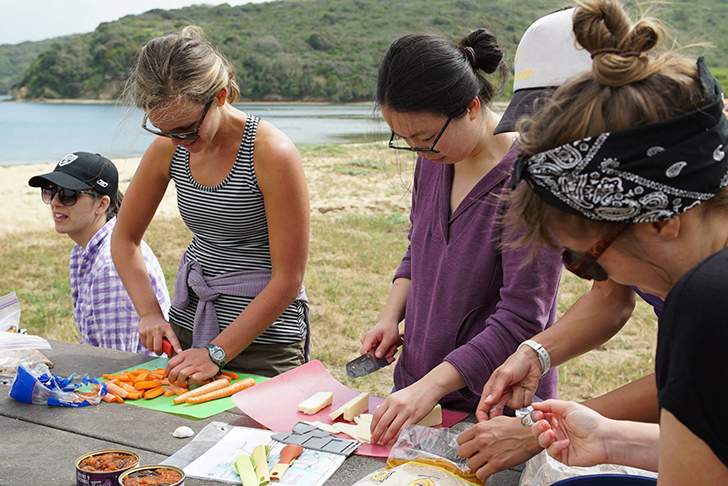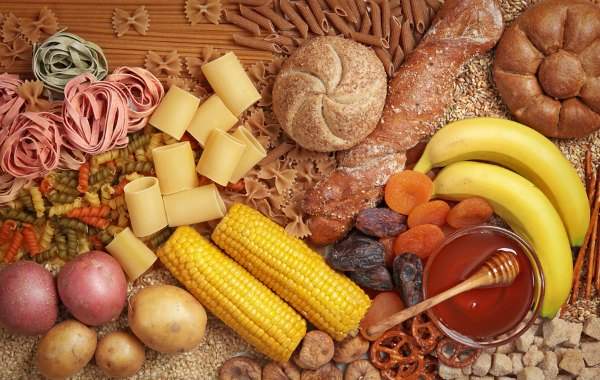Healthy Weight Loss For Climbing: In my experience as a chef and a nutritionist, I’ve found there are a few simple components to a successful weight loss regimen:
- Eat Real Food
- Train More
- Cardio
- Time
- A Positive Mindset
No one element will work perfectly if adopted on its own. Personally, I combine all of these tactics, with slight modifications. Each individual and each body will respond to these components differently, so it’s important to see what you like and what is working at that time. Know THE COST OF GOING PRO, only on cruxcrush.com!!!

Photo credit: Trail Mavens
1. EAT REAL FOOD
The most important meal for climbers is going to be after climbing. It aids in recovery! The food consumed at this time, no matter what time of day you climb, helps you to be more productive on the wall the next day. We need to rehydrate with water (not beer), replenish ourselves with nutrients (real food), and put in some maintenance time (rest, sleep) to make it happen.
Let’s say you typically climb at night: You eat breakfast that morning, a large lunch, have a snack an hour or so before climbing, and then eat after climbing. Make your post-climbing meal look like lunch: a smaller meal that is high in nutrients and low in overall calories. A combination of satiety and nutrients will ensure that your stomach won’t bother you later on.
A Few Easy Post-Climbing Meals
- Pulled Roasted Chicken with a Salad
- Vegetable Burrito with brown rice and beans
- Super-Sized Smoothie – Green smoothie, add cooked rice or oatmeal, add ½ an avocado or nut butter and blend away. You’ll give your body what it needs without an overload of calories. Further to the topic; weight loss for climbing is below.

Carbs, carbs, carbs! Photo credit: conquerthecrux.com
As I mentioned above, each person’s body, each person’s metabolism, and each person’s gut microbiota respond to different fuels differently. This takes some self-study, but consider how you feel after eating certain foods. How do you feel after eating a bowl of pasta? Or how about a rotisserie chicken? Are you sleepy or lethargic, agitated, satisfied, or find yourself hungry again an hour later?
It may come as a surprise that the Standard American Diet may not work best for you as an athlete. For example, I had a diet high in carbohydrates for a long time, but always craved animal proteins and peanut butter. From time to time, I would deal with an extra 5lbs and run it off, then eat a bowl of homemade pasta and pass out for 2 hours and wonder why… sound familiar? I took a metabolic test combined with a dietary assessment and found I have a metabolism that thrives off high-quality proteins and fats!
I have since adjusted my own diet so that it revolves around foods that fuel me in both my work and my play (climbing!).
2. TRAIN MORE
Energy is clearly spent when you climb, but as it turns out, the vast majority of “work” is latent – it happens without you noticing it. This is called your Basal Metabolic Rate (BMR) and you can easily raise your BMR by exercising. If you already exercise and you are looking to “burn more fuel” (aka drop some lbs) then add in weightlifting or resistance training. Think of exercising and additional weight training as building a strong, efficient bodily infrastructure that will use the fuel for energy from 24 hours a day onwards.
Don’t be afraid to “get bulky.” Muscle weighs more and also takes up less space. One pound of muscle takes up 18% less space than 1 lb of fat!! The antagonistic muscles you tune up and turn on are basically “recruited” to help us climb. The more toned and higher quality muscle you have, the more calories will be burned when you are NOT climbing. It’s kinda like working out in your sleep.
3. CARDIO
I wouldn’t believe it if I had not seen, read, or heard this explanation myself 10,000 times over. Due to the scope of this article, this is one of the better ways for me to explain it…
In short, you have to breathe in A LOT of oxygen to rid your body of a few pounds of fat. Do you have to run? NO! I don’t know many climbers that like to run or even trudge up a long approach. There are many other forms of cardio that one can do that will achieve the same goal. Consider logging some time on an easy climb on an auto-belay…whatever will get your heart rate up. Regardless, pick a form of cardio that you like. This way you will do it and do it more often. Bonus points for getting outside!
4. TIME (Be Patient With Yourself!)
If you feel that you truly need to lose additional weight, you need to accept the fact that it took time to put it on. That extra weight did not accumulate overnight… but over time. Are you surprised? Don’t be. We don’t recall everything we do, all the time. Holidays, life events, work, stress, and cats on the internet can take our focus elsewhere, and for good reason.

Photo credit: www.the-wanderlusters.com
5. A POSITIVE MINDSET
It’s more than just changing what you eat, what we need to change are our beliefs and behaviors. This takes some introspection and reflection. Sometimes we need to stop and take a look at our lives, ask ourselves what we believe in and take a look at our goals, our current state, and state of mind, our methods of living and see if they need some adjustments to help us get what we truly want.
Our mindset is a key piece of this puzzle and it is often overlooked. As they say, change is not about fighting the old, but about building and creating the new. We can enlist people to come along and help create a program that pulls together all of the elements listed above and enjoy it as it comes together. For us, by us. All the things that we believe in and know that help makes us our best, combined with the right choices for us, will help anyone committed to losing unwanted weight and increase our strength for climbing.
Climb on!
Lisa






